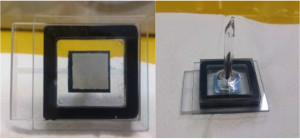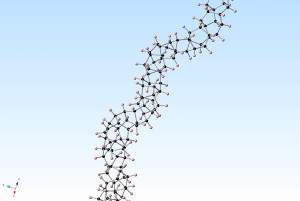
Scientists have developed a new type of energy-efficient flat light source with a power consumption about a hundred times lower than that of an LED.
Credit: N. Shimoi/Tohoku University
Scientists all around the globe are constantly looking for a way to create the even-better-bulb of tomorrow. In order to do this, researchers are looking toward carbon electronics.
This from the American Institute of Physics:
Electronics based on carbon, especially carbon nanotubes (CNTs), are emerging as successors to silicon for making semiconductor materials, and they may enable a new generation of brighter, low-power, low-cost lighting devices that could challenge the dominance of light-emitting diodes (LEDs) in the future and help meet society’s ever-escalating demand for greener bulbs.
With this in mind, scientists from Tohoku University have developed a new type of energy-efficient flat light source with a very low power consumption that comes in around 0.1 Watt for every hour of operation. This is about one hundred times lower than that of an LED.


